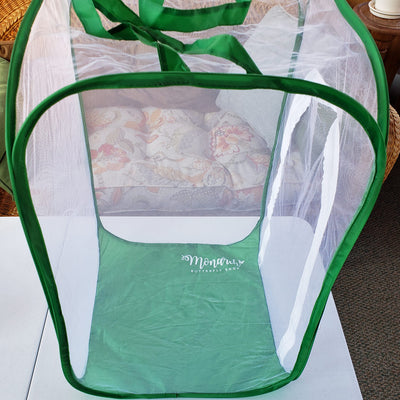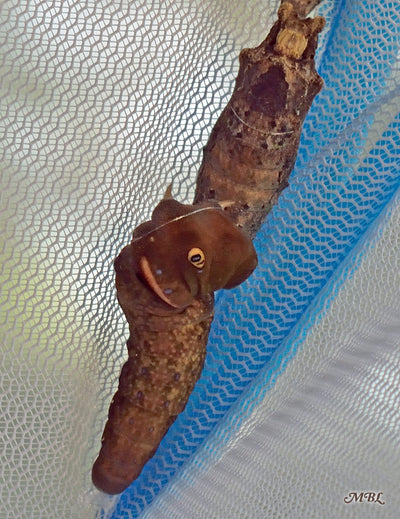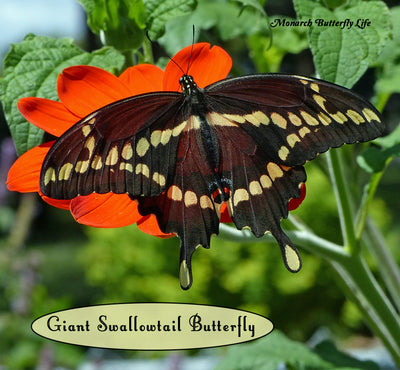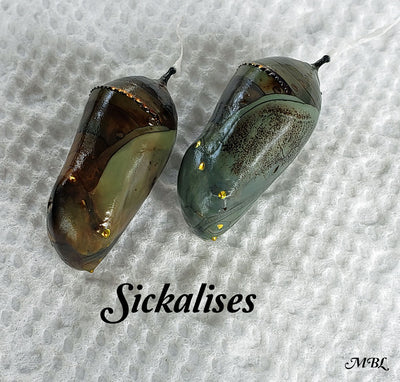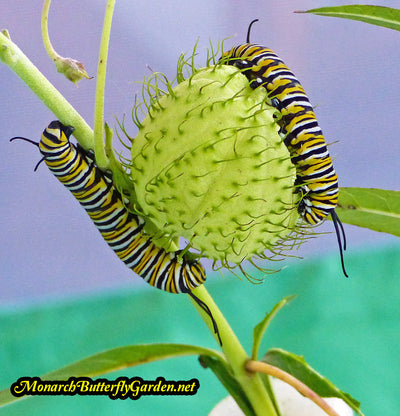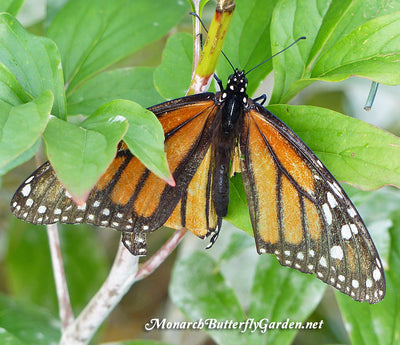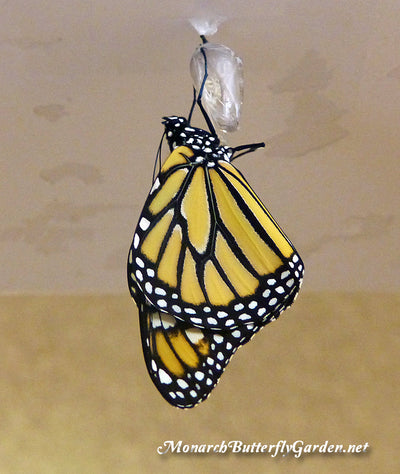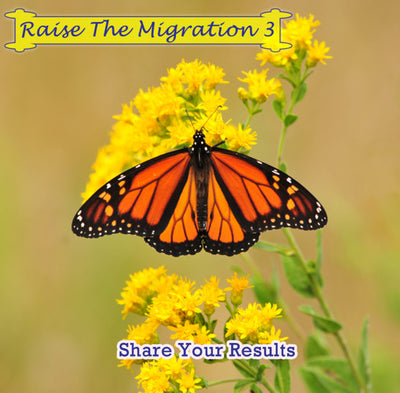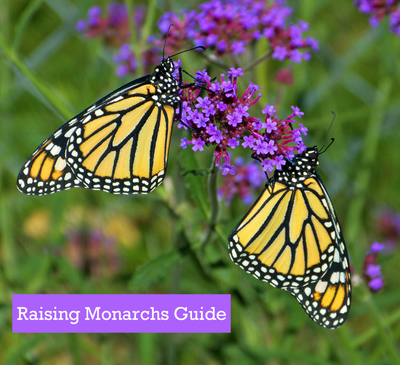Raising Butterflies Blog
How to Raise Eastern Black Swallowtails- Butterfly Life Cycle Photos

A Photo Journey Raising Eastern Black Swallowtail Butterflies

When we first started the butterfly garden, I believed that eastern black swallowtails were regular visitors to our Minnesota butterfly garden. But after years of research and networking with other butterfly enthusiasts, I realized this was not the case.
A bird’s eye view of the abdomen distinguishes a true black swallowtail from its close relatives…

Eastern Black Swallowtails (Papilio polyxenes) are one of the most abundant swallowtail species across North America. Click here to see if they’ve been sighted in your region?
Common host plants include common rue, curly parsley, carrot tops, golden Alexander, bronze smokey fennel, dill, celery, asparagus, and Queen Anne’s Lace.
In our garden, we’ve had the most success attracting them with fennel, but we stopped planting it because it attracted too many wasps. Wasps are beneficial pollinators, but in large numbers they can wreak havoc on the caterpillar population in your garden. Currently, we have rue and Golden Alexander.
If you’re interested in learning more about (or purchasing) black swallowtail host plants, get more info on my butterfly plants page
The Eggs
One of the pros of fennel is that it contrasts beautifully with black swallowtail eggs to make finding them easy, considering their small size…

Unlike monarchs, eastern black swallowtails will often lay eggs on the tops of leaves, which can make them a little easier to find. However, they tend to blend in with their host plants.
The Caterpillars

Our most recent black swallowtails were brought in as small caterpillars. I was not expecting to find them on our golden Alexander plant, but they were easy to see against contrasting yellow blooms. So, we took stem cuttings (with caterpillars) and placed them in floral tubes.
Tube Tip: take long cuttings so that the stem goes to the bottom of your floral tubes. That way you’ll have to refill less often.
Find Floral Tubes on the Raising Resources Page

Common rue is also easy to use with floral tubes and is also a host plant for Giant Swallowtail Butterflies.
Some people have allergic reactions to rue so you may want to handle this plant with gloves.

Fennel is a top host plant for attracting eastern black swallowtails and the feathery foliage is beautiful addition to the garden landscape…

Other host plants for black swallowtails include curly parsley, dill, and carrot tops.
Monarchs go through their metamorphosis almost twice as quickly as their swallow mates. I’m often asked if they can be raised in the same enclosure. I’m not aware of any disease or in-fighting issues, but I’d suggest raising them on elevated stem cuttings to keep them separated. We also use separate mesh enclosures, but did introduce these two briefly:

As eastern black swallowtails grow, they also became more colorful. Many confuse monarch caterpillars with black swallowtails, but if you compare the caterpillars below, with the large monarch above, you can see the differences.

Also, monarchs only eat milkweed so you’ll never seem them feasting on your dill or fennel…or zizia!
Once the caterpillars are ready for the next stage, they are kind enough to let you know in advance 💩 😉
The Chrysalides (or Chrysalises)
Before the caterpillar searches for that perfect spot to form its chrysalis, it will purge any remaining food all over the cage floor. Thankfully, we had our poo poo platter inserted on the cage floor so they purged inside that. Otherwise, it can stain the cage floor, as our eastern tiger swallowtails did multiple times in this cage:

Swallowtails will attach themselves to the cage wall, cage ceiling, stick, or host plant in two places: at the base with a silk pad and with a silk girdle around the mid section of the caterpillar:

So it looks like we’re good to go? Not so fast…
This poor swallowtail was compromised by disease or parasites. This photo was taken several seasons ago, and the caterpillar never did form its chrysalis. We’ve never had any diseases (I’m aware of) affect swallowtails. However, we’ve had caterpillars parasitized by the Trogus Pennator Wasp. If you know what happened to the caterpillar pictured above, please post a comment a the bottom of the page…
Here’s a healthy eastern black swallowtail, to take us to the next stage of the butterfly life cycle:

This caterpillar formed a chrysalis directly on its golden Alexander host plant. Green chrysalides are more common during the spring and early summer. Many believe this is a defense mechanism against predators that helps them blend in with their surroundings…

In the late summer and fall, the chrysalis colors are more likely to blend in with the tree branches that will hide them from predators over winter.

A monarch chrysalis will hatch reliably in 7-10 days, but the swallowtail family is on a European vacation schedule. They can take 2-3 weeks, or longer if they see fit. If you’re raising toward the end of the season, they may even decide to overwinter until next spring.
The Butterflies
Before your butterfly emerges, the chrysalis will turn dark (with yellow accent spots) revealing the butterfly inside. It’s easy notice this change with a green chrysalis, but the change is more subtle when the chrysalis is formed brown.

When the adult butterfly emerges, it will come out of the top of the chrysalis, and find a place to hang down to expand and dry its wings properly:

As with monarchs, I suggest placing eastern black swallowtail butterflies outside in a closed mesh cage for a couple hours to sunergize 🌞 them. This insures they will have plenty of energy to elude potential predators upon release.
Females typically have more blue hue in their hindwings, and less prominent yellow wing markings:

Males typically have less blue hue in their hindwings, and more prominent yellow wing markings:

Eastern black swallowtails don’t spend as much time in the butterfly garden as some others in the swallowtail family, but zinnias and obedient plant are two plants they have favored in our northern garden over the years.

Would you like to start raising eastern black swallowtails through all 4 stages of the butterfly life cycle? Click here for butterfly cages and helpful raising supplies. Happy Raising!


